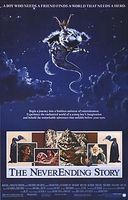
ZooScope ZOOM: The Neverending Story
‘The animal is distinct, and can never be confused with man. Thus, a power is ascribed to the animal, comparable with human power but never coinciding with it. The animal has secrets which, unlike the secrets of caves, mountains, seas, are specifically addressed to man,’[1] John Berger theorises on our understanding of non-human minds. The death scene of Artax in The Neverending Story raises a dilemma around the representation of animal minds that produces various implications for the human-animal boundary. Because, to us as humans, the animal is a separate entity whose mind we cannot understand, it is questionable as to whether Artax’s notification to Atreyu of his resignation to the swamp, by whinnying and planting himself to the spot, is simply a result of depressive thoughts, or, what we would more likely expect for a working animal in the world outside of the mythical realm of Fantasia: an act of defiance to his master’s service. Is Artax’s position to his human companion an equal, as a friend (despite species differences and language barriers), or a slave to carry Atreyu on his quest across the mythical land of Fantasia? Either way, Artax’s suicide marks the beginning of servitude to his own thought processes: thought processes that we, as humans, even in a fantasy world, cannot access.
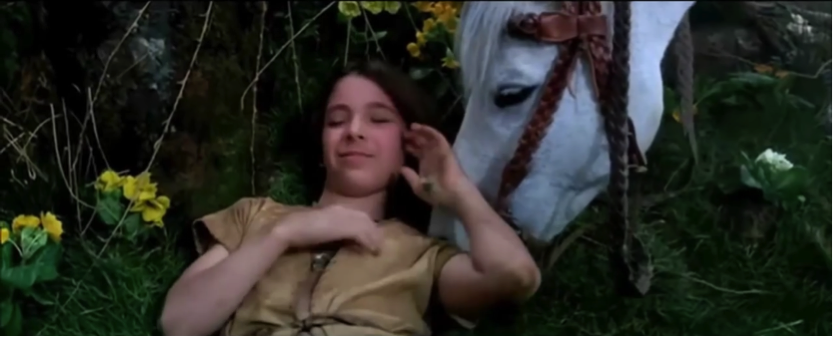
Above: Atreyu (left) and Artax (right)
‘Everyone knows that whoever lets the swamp’s sadness overcome him will sink,’ reads Bastian, as the narrator. In Fantasia’s realm, the obstacles facing the main hero not only affect anyone, but anything, i.e., non-human animals – in this case, Artax the horse. A result of the fantasy genre ‘creating an inviting world that has its own rules,’[2] animal mental-faculty in Fantasia appears to be elevated to the same level as humans, suggesting that, if Artax’s death is due to depressive thoughts, animals have the same notions of hopes, dreams and determination that humans have, and consequently suffer from the same lack of motivation, emptiness and solemn thoughts that coexist as psychological opposites. Frighteningly, this animal is affected so badly by his emotions that he resorts to self-destructive behaviour.
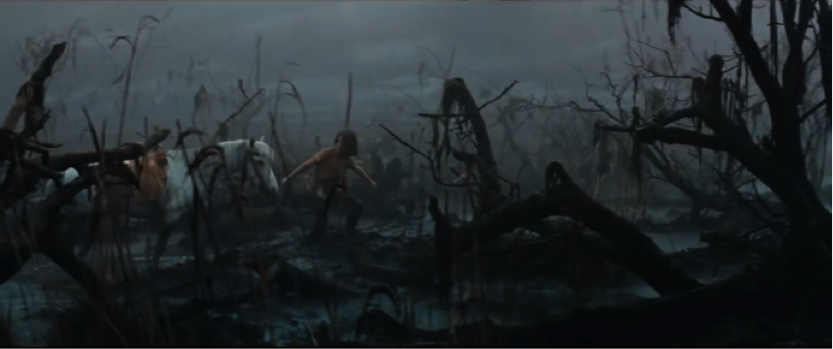
Above: the disconsolate human psyche, as represented by the swamp’s scenery, slowly ensnares the innocence of the white horse within its’ gloominess.
The gloomy scenery of the swamp works hard to suggest Artax succumbing to depression. As horse and boy walk endlessly across the middle ground, a foggy backing obscures the bog’s boundaries, making them unfathomable and thus emphasising the maddening difficulty of navigating the almost barren land. Dead twigs in the foreground creeping into the shot occasionally obscure our view of the characters. Their dark colouration echoes the darkness creeping into Artax’s mind; their finger-like appearance would suggest the human condition of depression seizing the horse’s psyche. The tree’s literal ‘grabbing’ with use of their human-like ‘fingers’ sees human displacement of animal thought processes by replacing the horses’ thought processes with human thought processes, thus placing the human condition of depression in the animal’s mind. This encases the animal within our preconceived perception of it: as humans we perceive Artax as having the same thought processes as a human being, so the audience understands Artax as a sufferer of depression. This displacement and subjugation is the only way we can create our own ‘understanding’ of animal thought and as a consequence we can rationally explain Artax’s suicide as a result of depression. This is the only way it makes sense to a human audience who cannot otherwise understand, or even conceive of, animal thought processes and rationale for wanting to die. Our attempts at understanding the animal mind are consistently distanced by placing our conception of how our own human minds work over how we think the animal mind works – in effect, assuming animal minds work the same as ours and disregarding that there may be any difference. Thus, the animal is trapped inside our own conceptual construction of it, and our reading of Artax’s behaviour (even in a fantasy world, where we can more easily believe a horse having the same thought processes as us) is based on an assumption.
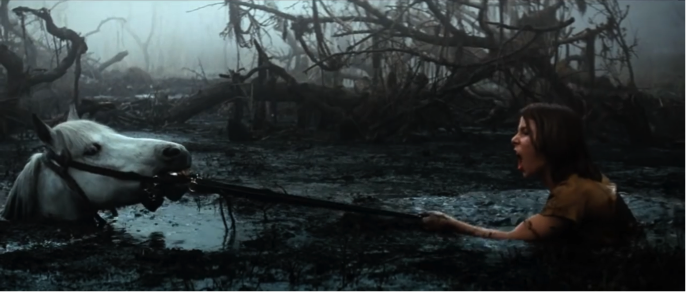
Above and below: Atreyu stands at a level height with Artax. But as a friend, or as a master? Either way, the mise-en-scene would suggest Atreyu’s attempts, as a human, to align his thought processes with the horse’s.
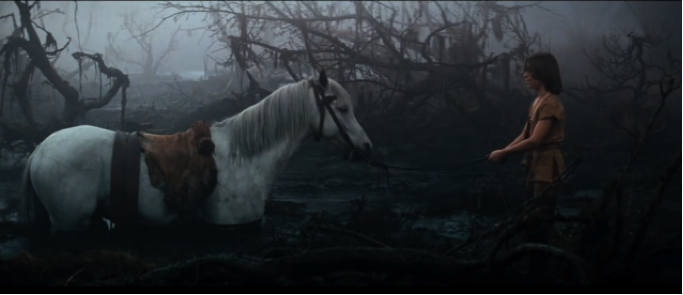
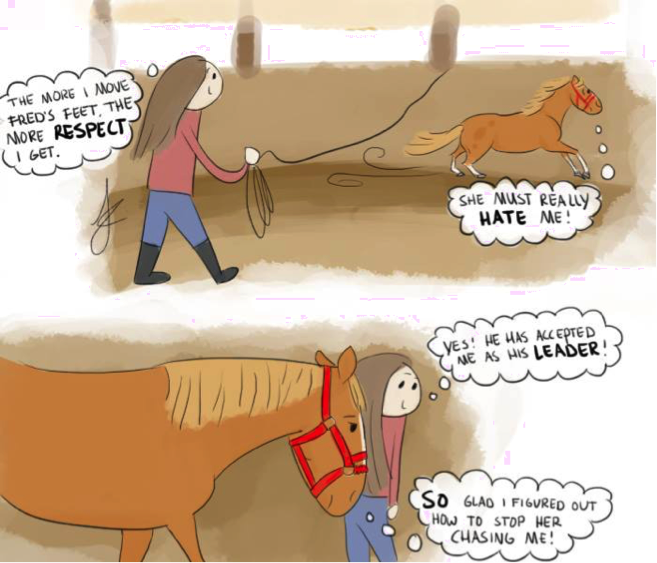
Above: ‘Fed Up Fred’ comic satirising the Natural Horsemanship training method of ‘join up.’ It demonstrates that we cannot really understand what happens in a horse’s mind when we ‘train’ or interact with it. Image from https://fedupfred.com/
But if Artax, as an animal in the world of Fantasia, possesses the same thought processes, intelligence and mental capacity as a human being, why is he chosen as a victim of the swamp as opposed to Atreyu, his human companion? It could be said that through dying first, Artax becomes a speciesist victim. Additionally, and most puzzlingly for a creature supposedly equal in mental capacity to a human being, is his inability to talk. Although the option to deny Artax speech ability, and therefore an inability to express his grief, was perhaps chosen to reduce the distress of the family-film’s scene, and make the mature topic of depression more subtle, it is perceivable that due to lacking this ability the horse has less agency than a human, and therefore the same speciesist hierarchy of human over animal exists in Fantasia as it does in the world of the audience. Artax’s role in the quest in the first place is the same use we have for horses in the real world, as a vehicle for human transportation, exploited for his superior physical strength. Refusing to travel further through the swamp could signify a resistance, placing Atreyu as a master of Artax. The horse’s further refusal to carry on walking in response to exclamations such as ‘move, you stupid horse!’ could be interpreted as Artax intentionally refusing to move and further carrying out this resistance to human power rather than being physically and mentally unable to move as a result of mental illness. It is questionable as to whether Atreyu’s exclamations are the desperate pleas of a friend or commands of a master. However, because Artax cannot express himself through the power of language, we once again have to rely on our own assumption to interpret his behaviour, which once again encases him inside our own perception of him, displacing his own thoughts, thus taking away his agency of independent thought which renders him a lower-ranking species than humans.
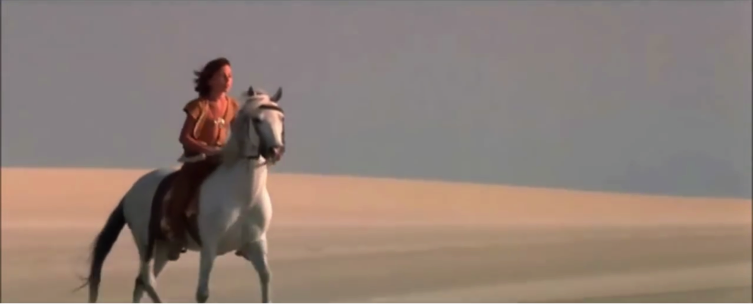
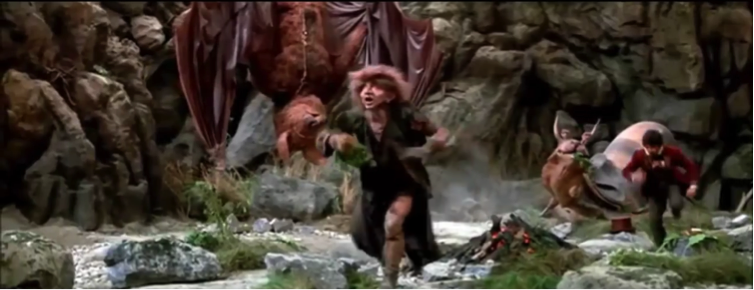
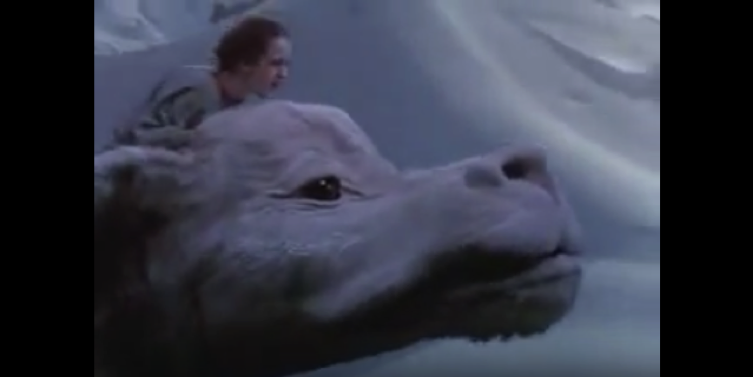
Above: Mythical animals in Fantasia are also used for human transportation, including the ‘Stupid Bat’ and Racing Snails. Even Falkor, the extremely rare Luckdragon, who possesses the power of speech, carries around Atreyu and Bastian, the two human protagonists of the film.
The antagonist of The Neverending Story is not a character, but a physical anti-force called the Nothing. As explained by werewolf Gmork, everything in Fantasia is built out of human dreams and imagination, and the Nothing, taking the form of a storm that erases areas of the fantastical world, is manifested out of human minds that have given up dreaming and hoping, in effect replacing areas of Fantasia with the emptiness of these human minds. The eradication of Artax in the swamp of sadness – which is the representation of human depression – is emblematic of our wiping the horse out of our recognition. As we do not understand the animal’s mind, and need to form our own assumption of what the animal thinks, we deny it the right to its own expression. Combined with our lack of comprehensive understanding, this means the animal exists outside our own thought processes. Artax sinking into, and being consumed by the swamp, much the same way as the Nothing erases areas of Fantasia, demonstrates a displacement and eradication of the animal from our human minds.
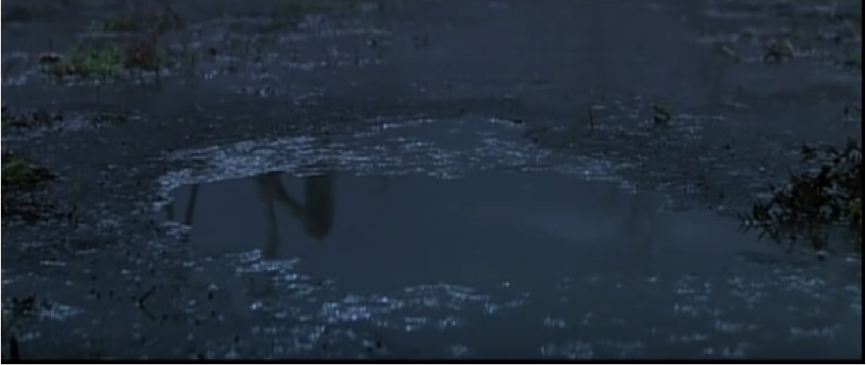
Above: The empty space left after Artax drowns inside it. As a result of the language barrier between human and animal, we cannot construct the way we want the animal to be, even in our dreams. Consequently, the animal is transferred to the foreign confines of an empty, unfamiliar area, the emptiness echoing the alienation between the animal’s mind and the human mind.
By becoming trapped inside the mud, Artax’s inability to express himself through language becomes a physical metaphor of how he is trapped within the human construction’s own interpretation of animal thought processes. As a result, he is displaced and erased from our imagination by the space of the empty puddle left behind, as even human imagination, manifested in the world of Fantasia, cannot imagine how an animal’s thought process would work. As no explanation is explicitly given, and Artax never outwardly expresses himself, it is up to the audience to decide the rationale behind Artax’s suicide.
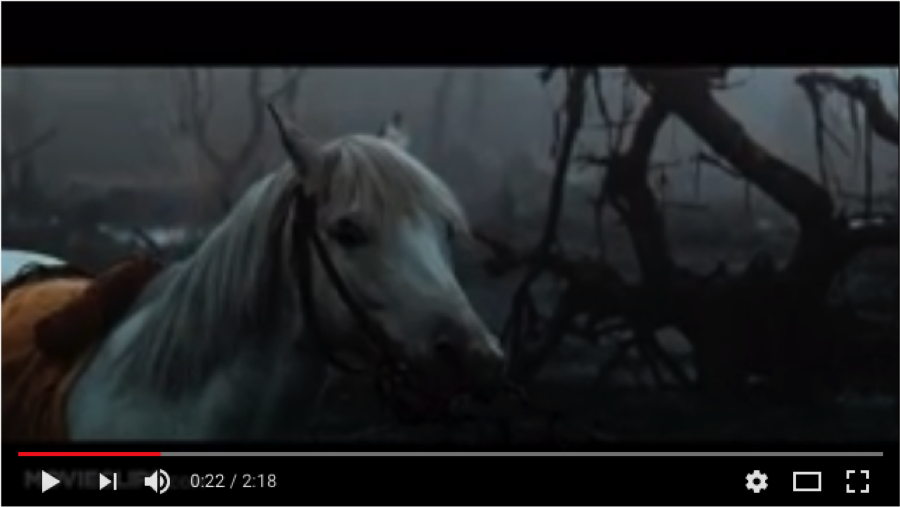
YouTube video of the scene focused on in this ZOOM article: <https://www.youtube.com/watch?v=vE8mFDabqD0>
Filmography
- The Neverending Story, dir. Wolfgang Peterson, Warner Bros. Pictures (1984)
Bibliography
- Berger, John., Why Look at Animals? (England: Penguin 2009)
- Pratt, Doug., Doug Pratt’s DVD: Movies, Television, Music, Art, Adult and More! (2005) <https://books.google.co.uk/books?isbn=1932916016>[assessed 10/10/2016]
[1]John Berger, Why Look at Animals? (England: Penguin 2009) p. 14
[2] Doug Pratt, Doug Pratt’s DVD: Movies, Television, Music, Art, Adult and More! (2005) <https://books.google.co.uk/books?isbn=1932916016>[assessed 10/10/2016] p. 740